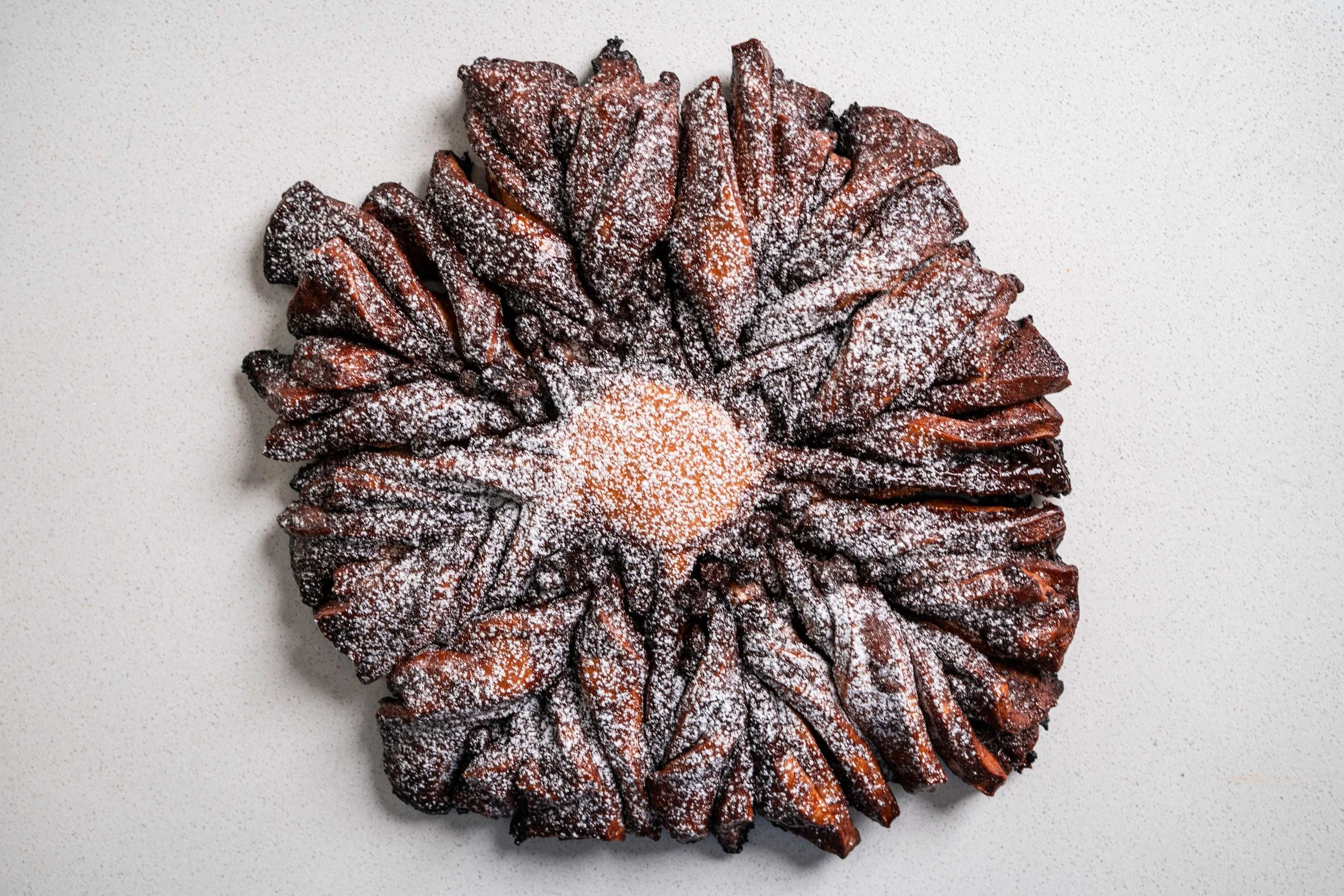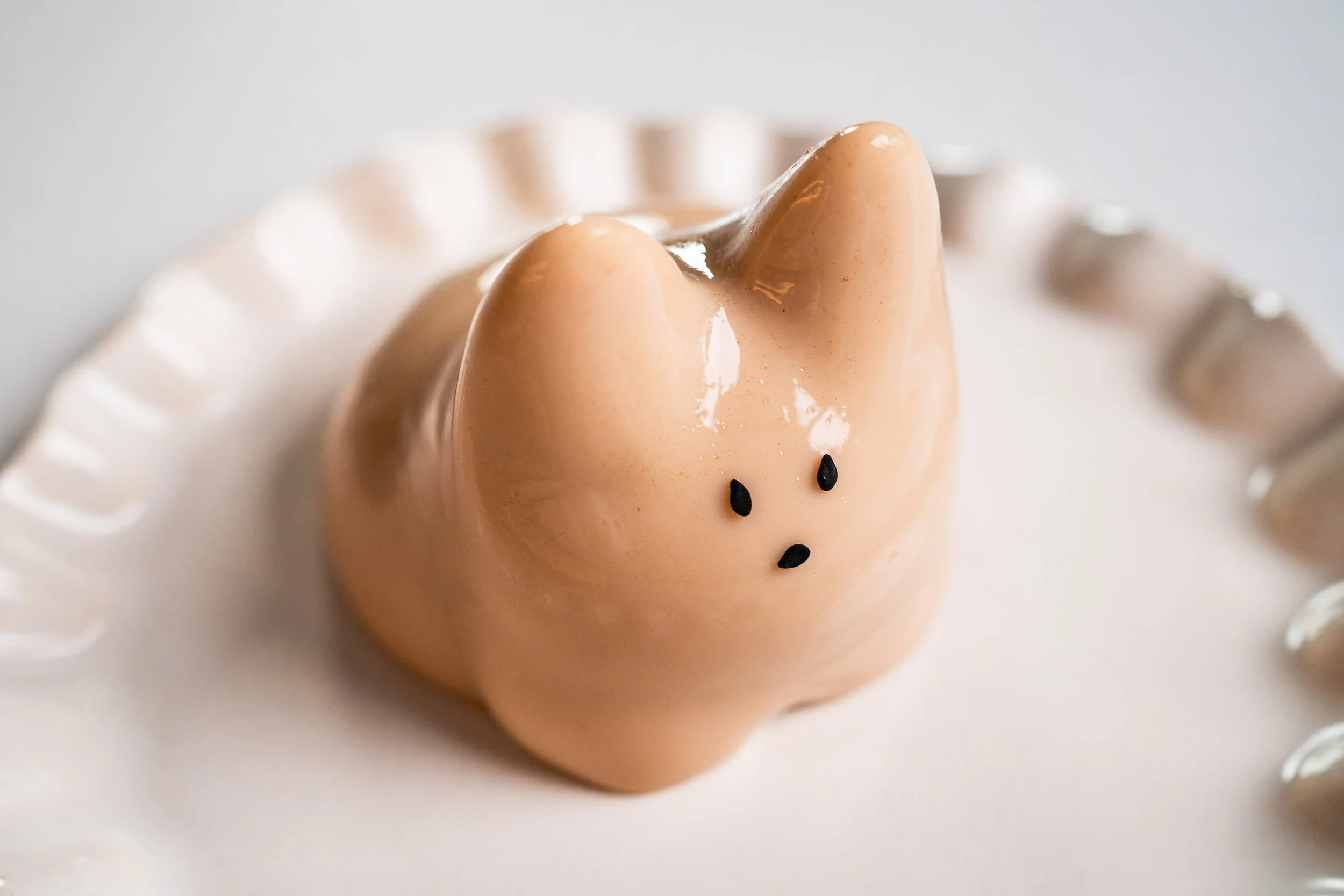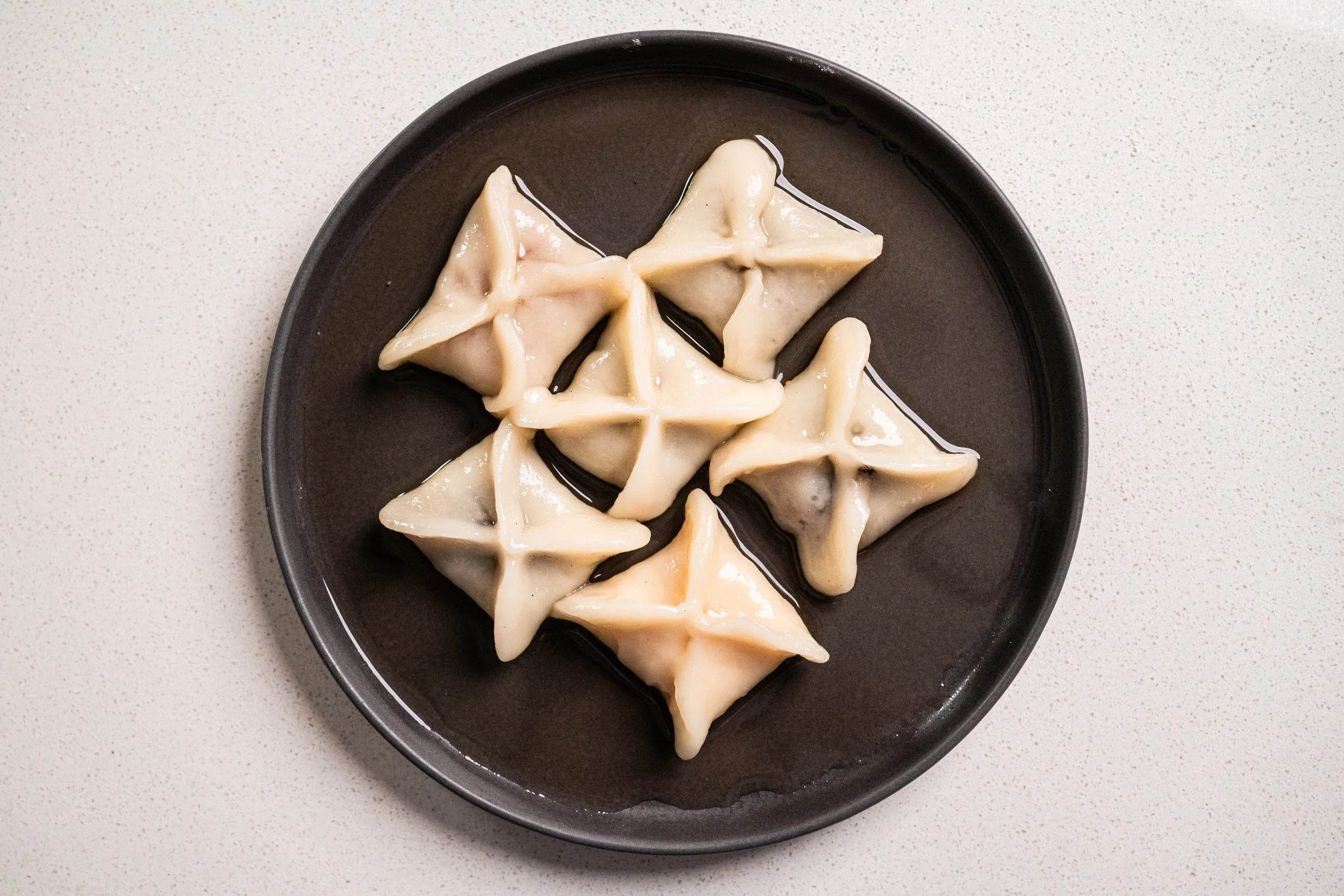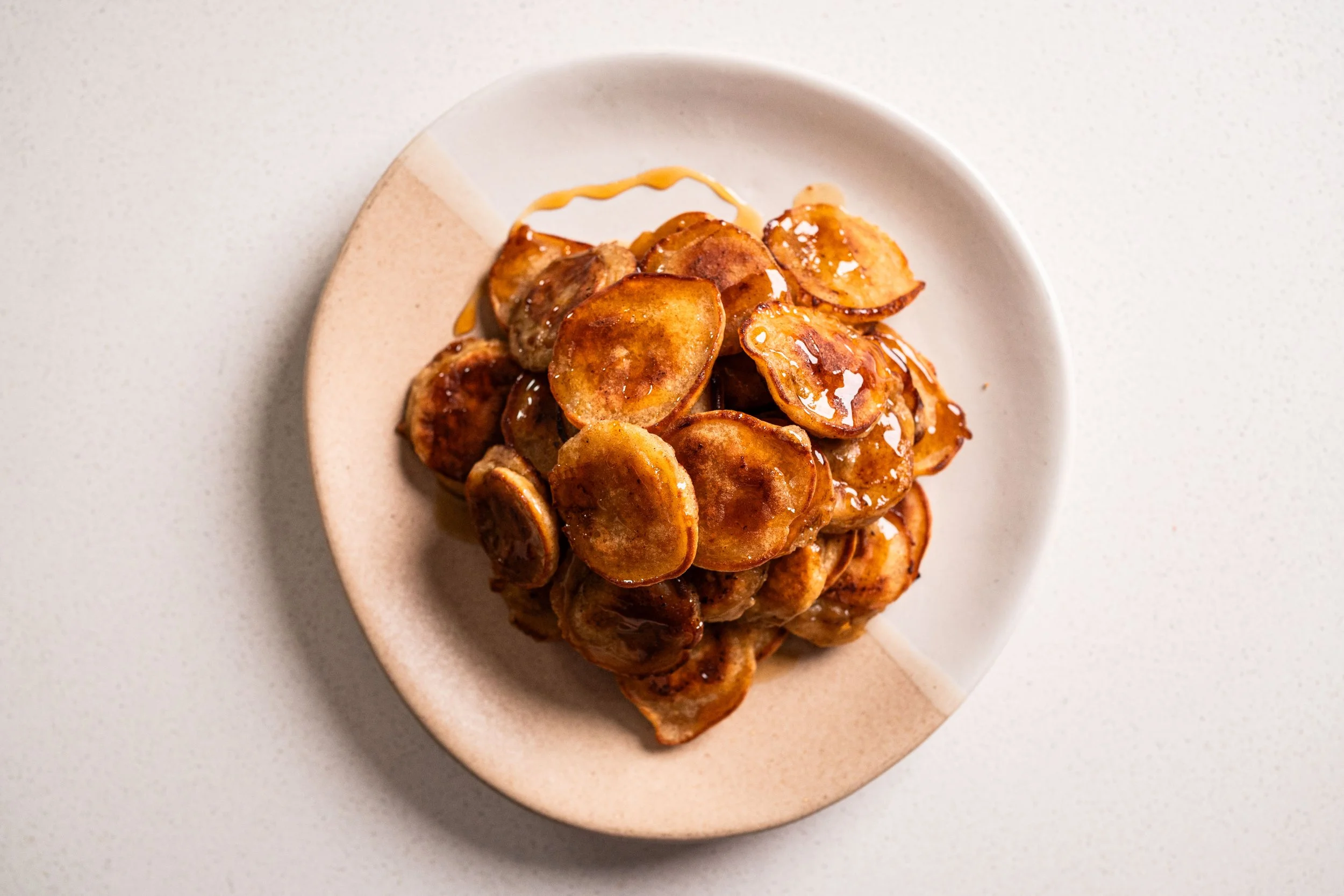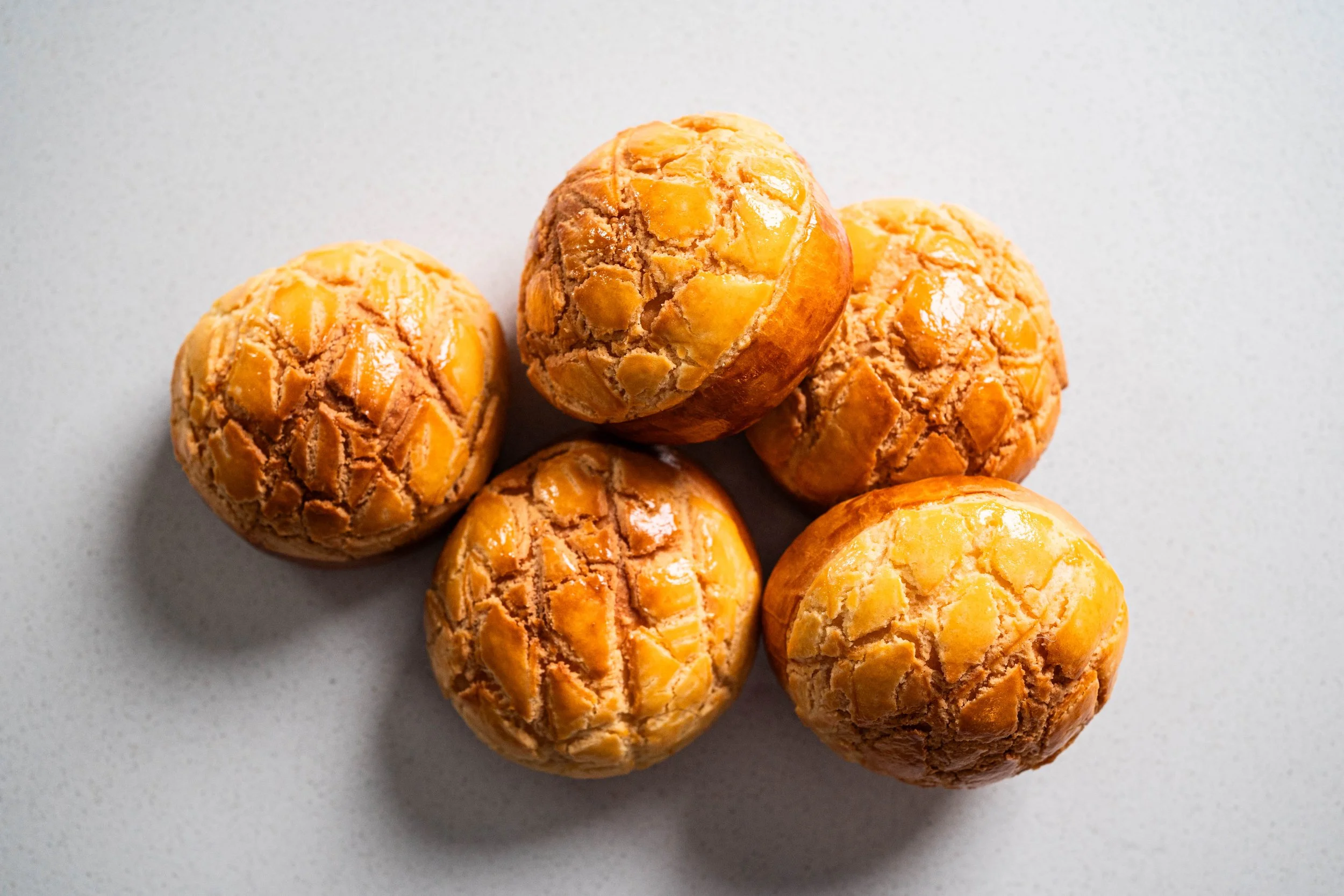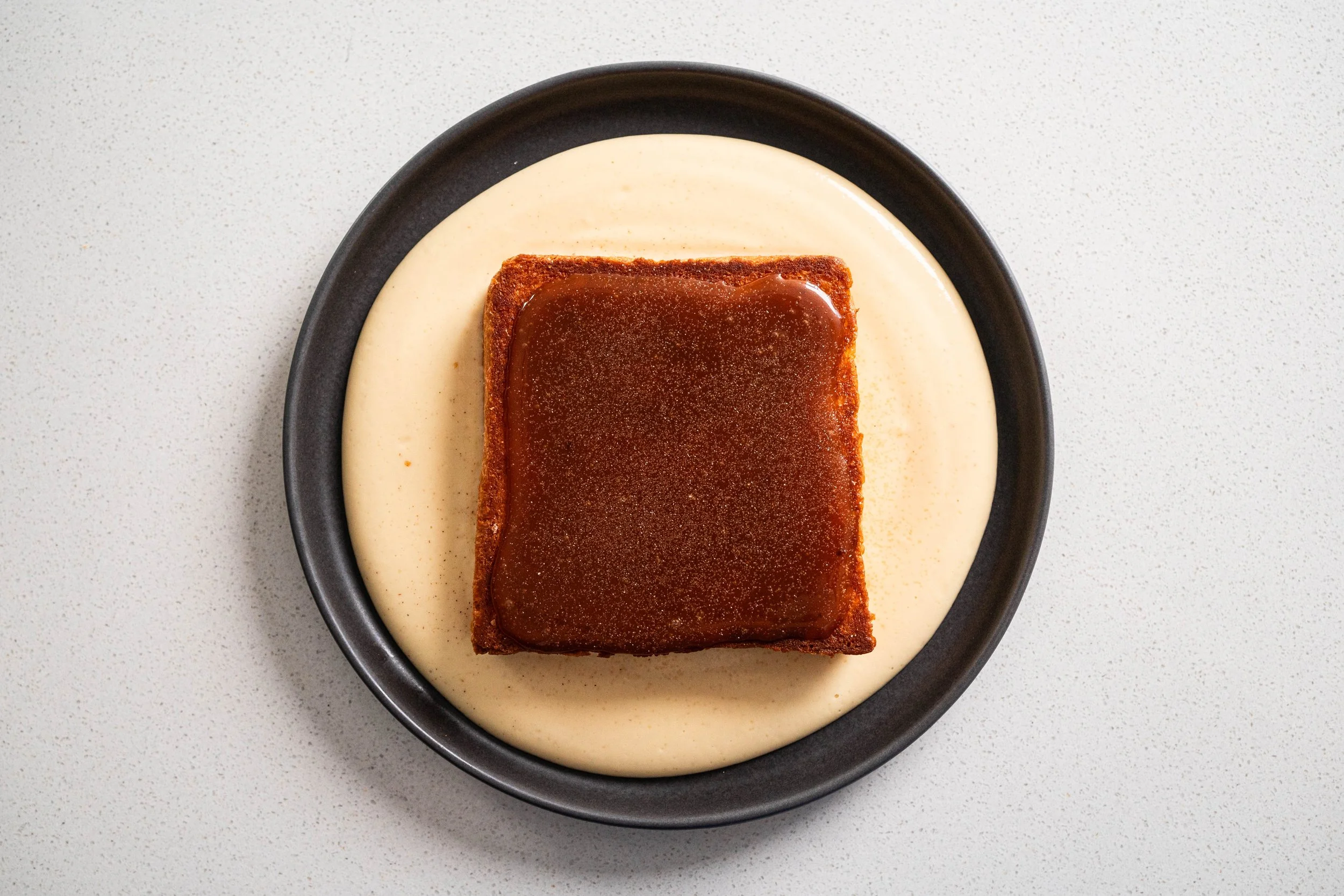Asian Fruit Cake
I’ve never been a big fan of fruit cake. Maybe it’s the cloying sweetness of the molasses and sugar, or perhaps it’s the heavy-handed dose of spice within that scratch at your tongue and throat with each chew, but more often than not, that initial look of artificially coloured maraschino cherries, bleached red and green, just really turns me off before I even bite into it. So to date, I’m sad to say that I haven’t had a classic fruit cake that I’ve loved.
So I took it upon myself to make a better, tastier version. One that’s more than just a customary Christmas cake, more than just a bunch of well-worn fruit and spices baked together. I want to make a cake that draws from flavours that are truly me—perhaps touching on my Asian upbringing and flavour preferences—but also retains much of that festive, Christmas tradition.
About the Dish
Enter a fruit cake made with Asian fruits! Because in place of the sultanas, cherries, and overly sweet dried fruits, I used fruits with a subtler sweetness and more complex character that goes beyond just sweet. Think Asian fruits like dried longans and persimmons, goji berries and red dates, and even some bits of dried sweet potatoes thrown in for an extra dimension with its slightly chewy texture. Soak them all in rum overnight—and a bit of sake too if you wish for an extra Asian accent—till they’re bulbous with alcohol, and you have the base for a mold-breaking fruit cake.
The batter itself isn’t all that different from the norm—cream up butter and sugar, then add eggs and flour to bind—but for a few subtle Asian tweaks. A dash of yuzu syrup here, a flurry of gula melaka (Malaysian palm sugar) there, and a handful of chopped Korean pears in place of grated apples serve to cement this cake in the Asian realm.
But before you think that this can no longer be considered a fruit cake, the well-loved spice profile of a classic fruit cake—heavy on the cinnamon and cloves, with a background hint of ginger and nutmeg—will convince you otherwise, and stamps this cake’s place firmly in fruit cake territory.
So this is a cake that flaunts off its namesake without reservation, undeniably Asian with its ingredients, and unmistakably a fruit cake in both look and flavour. It is an Asian fruit cake, proudly paradoxical in its existence.
Tips for Success
To make the best Asian fruit cake, here are some tips:
Choice of dried fruits: The combination of dried fruits here play a big role in the final flavour of the cake, so a good rule of thumb to follow is to use more of the fruits that you like, and less of those you’re meh about. Most mixtures would work well, but I would also recommend using at least 4 different types of fruits that have different textures and levels of sweetness. For me, the bulk of the dried fruits were dried longans and dried persimmons, both of which I love snacking on on their own, but also lent a good amount of complex sweetness to the cake. To balance these, I added in dried sweet potatoes, red dates, and goji berries—all three of which have a more subtle sweetness to them—as well as some raisins for a bit of classic fruit cake familiarity. You can source these dried fruits from most Asian grocers or Chinese medical halls (for those in Asia), but for the persimmons and dried sweet potatoes, they might be a trickier find. But I got some pretty spectacular ones from the sponsors of this recipe—K Fresh.
Choice of alcohol: Rum is the choice alcohol for soaking the dried fruits in. And in my version, I stuck to tradition, but added in a dash of sake as well to bump up the level of alcohol and give it a rice-y Asian spin. If you’re not into alcoholic fruit cakes though, or just want to avoid alcohol entirely, you can always substitute the alcohol with apple juice or orange juice.
Aging the cake: While fruit cakes can be eaten fresh—and this one is a good one for that—the true intensity and deep flavour of fruit cakes come from the aging process, so I would highly recommend doing this step. It takes a bit more patience and self-control, as you have to wrap the cake in rum- or sherry-soaked cheesecloth and let it sit in the fridge for some days before you can consume it. I recommend a minimum aging time of 1 week, but most store-bought or bakery-made fruit cakes are aged for way longer, sometimes up to months! The flavour will keep developing and deepening over time, so the more patient you are, the better rewarded you will be!
This recipe is sponsored by K Fresh by First Pick, a brand bringing premium air-flown Korean fresh produce to Malaysia.
Asian Fruit Cake
Makes 1 large 20cm x 20cm (8 inch x 8 inch) fruit cake, or 2 smaller ones
Ingredients
Dried fruit mix (You can substitute different fruits, totaling 1kg)
250g dried persimmons, chopped (I got mine from K Fresh)
100g dried sweet potatoes, chopped (I got mine from K Fresh)
250g dried longan
150g dried red dates, chopped
150g raisins or sultanas
100g goji berries
240ml (1 cup) rum
60ml (1/4 cup) sake, optional
Fruit cake batter
115g (1/2 cup) unsalted butter, softened at room temperature
160g gula melaka, finely chopped, or dark brown sugar
5 eggs
zest of 1 orange
60ml (1/4 cup) orange juice
30ml (2 tbsp) yuzu syrup, can be substituted with orange juice
210g (1 3/4 cup) all-purpose flour
3g baking powder
3g (1 tsp) ground cinnamon
1g (1/2 tsp) ground cloves
1g (1/2 tsp) ground ginger
0.5g (1/4 tsp) ground nutmeg
5g (1 tsp) salt
1 medium Korean pear, chopped into small pieces
120ml rum, for aging
Directions
Soak dried fruits: Combine all the dried fruits in a large bowl, and pour in the rum and sake. Give it a mix, then cover the bowl with a plate or plastic wrap, and keep it in the refrigerator overnight, or for at least 6 hours to fully hydrate the fruits.
Baking prep: Heat up an oven to 160°C, and line a 20cm x 20cm (8 inch x 8 inch) deep cake tin with parchment paper. (You could also instead use two smaller cake tins.)
Make batter: With a whisk, cream up the butter and gula melaka (or brown sugar) in a bowl for 2-3 minutes until it turns fluffy and slightly pale. Then, add in the eggs, orange zest, orange juice, and yuzu syrup. Whisk to combine, then sift in the all-purpose flour, baking powder, ground cinnamon, cloves, ginger, nutmeg, and salt. Fold it all together until a smooth batter forms and no streaks of flour remain. Finally, add in the chopped Korean pear and the soaked dried fruits, along with any excess rum or sake left in the bowl. Give it a few gentle folds to combine, making sure the fruits are evenly distributed in the batter.
Bake cake: Pour the batter into the lined cake tin, smoothing out the top with a spoon. Then, bake this for 70-80 minutes, until a cake tester poked into the middle of the cake comes out clean. When done, take the fruit cake out of the oven and let it cool to room temperature in the cake tin.
(Optional) Age cake: The cake can be eaten fresh on the day it’s baked, but to bring this cake to its full potential, you can age it. To do this, wrap the cake in cheesecloth or muslin cloth, then pour the rum onto the wrapped cake on all sides so the cheesecloth absorbs it. Then, wrap the cloth-covered cake in plastic wrap, and keep it in the refrigerator for at least 1 week, or up to a month for the flavour to really develop. (You can also keep it for longer, just make sure to keep your work surface super clean as you handle the cake so you don’t introduce any bacteria in the process.)








